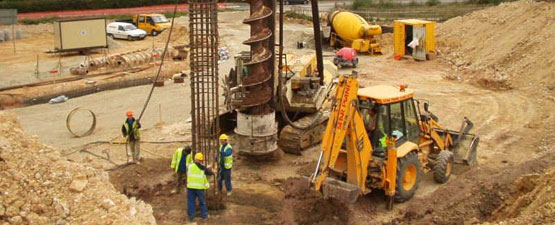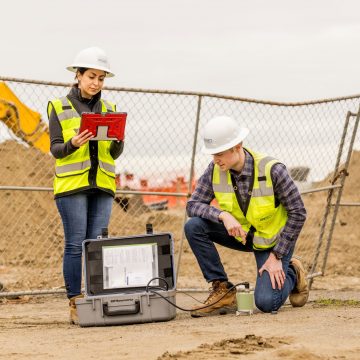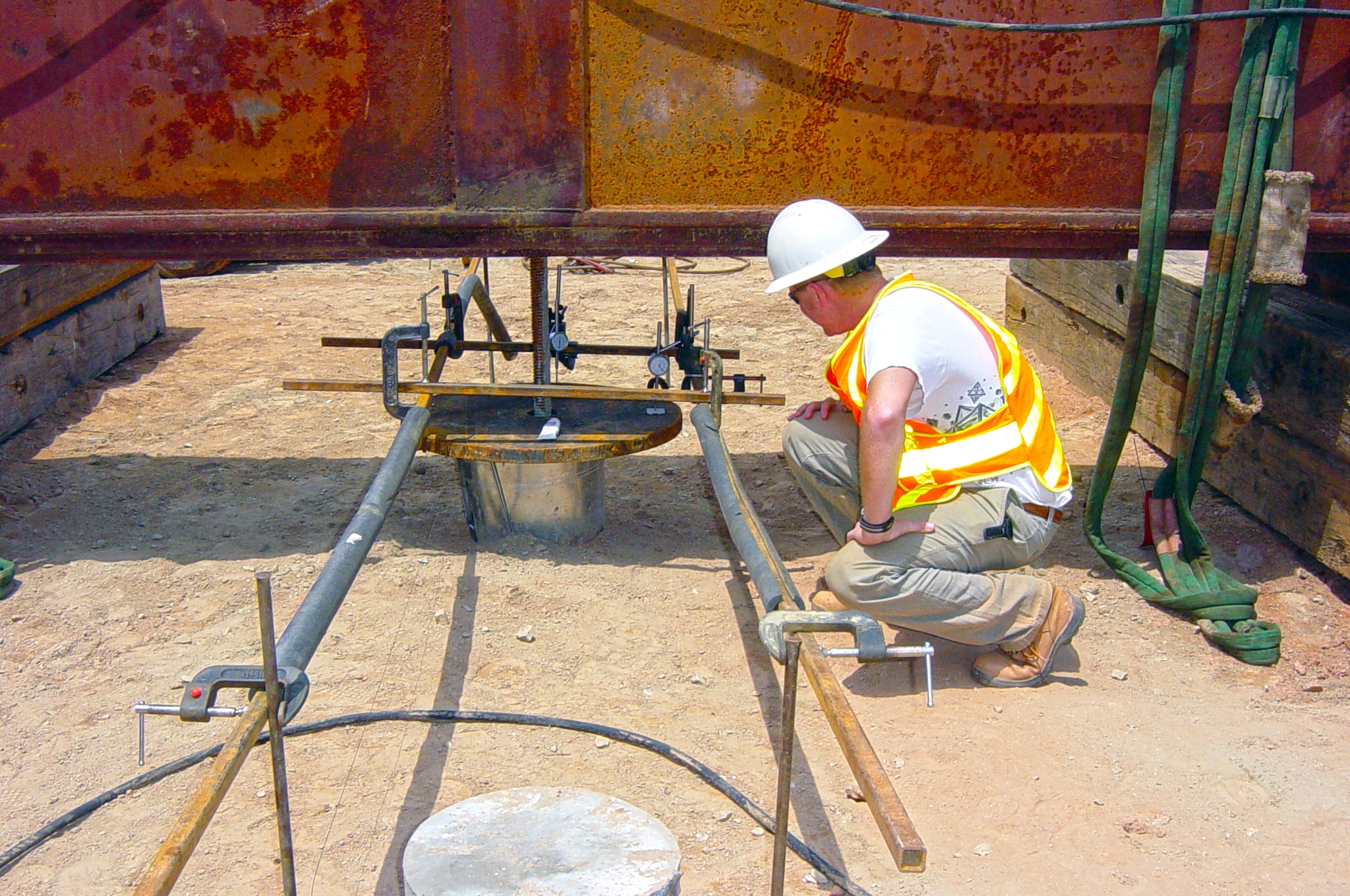The Crucial Payments of Geotechnical Engineers in Analyzing Dirt Behavior and Structure Design for Lasting Framework Advancement
Geotechnical engineers offer as a keystone in the realm of sustainable facilities development, where their competence in analyzing soil behavior directly affects the safety and security and durability of frameworks. By using advanced strategies such as Common Penetration Examinations and Cone Penetration Screening, they diligently review dirt residential properties, leading to informed decisions on foundation layout.
Duty of Geotechnical Designers

Along with site investigations, geotechnical designers assess potential risks such as soil liquefaction, slope security, and groundwater concerns. They use innovative engineering concepts to establish services that alleviate these threats, making certain that styles follow pertinent codes and requirements. Their job often entails partnership with other design disciplines, designers, and environmental researchers to produce incorporated techniques to infrastructure growth.
Additionally, geotechnical engineers add to lasting practices by advertising the use of materials and methods that lessen ecological effect. Via their extensive understanding of dirt mechanics and geology, they play an important role in promoting secure, resilient, and sustainable framework that meets the requirements of culture while protecting the atmosphere.
Dirt Behavior Evaluation Strategies
Understanding dirt habits is essential to notified decision-making in geotechnical design, as it straight affects the layout and construction procedures. Different evaluation strategies are employed to review dirt residential or commercial properties, making sure exact forecasts of its efficiency under various loading conditions.
One main technique is the Standard Infiltration Test (SPT), which supplies understandings right into dirt density and consistency with the resistance come across during infiltration. Likewise, Cone Infiltration Screening (CPT) offers a constant profile of soil stratification and in-situ stamina parameters, enabling an extra detailed understanding of subsurface conditions.
Lab examinations, such as Atterberg limits, unconfined compressive stamina, and triaxial examinations, are crucial for characterizing soil actions under controlled problems. These examinations facilitate the decision of vital specifications, including shear compressibility, stamina, and permeability.

Structure Design Concepts
Structure style concepts are important for ensuring the security and long life of frameworks, as they dictate how lots are transmitted from the superstructure to the underlying soil. These principles encompass numerous factors to consider, consisting of load-bearing capability, negotiation, and side security. An extensive understanding of dirt technicians is essential for geotechnical designers to assess the interaction between the dirt and the foundation.
One trick principle is the ideal option of structure kind, which might include shallow foundations, such as spread footings, or deep foundations, like heaps or caissons, relying on soil conditions and architectural loads - geotechnical industry. The structure has to be designed to lessen differential settlement, which can result in architectural damage

Sustainable Infrastructure Practices
Exactly how can we effectively incorporate sustainability right into facilities practices? To attain this, it is necessary to take on an all natural technique that highlights the relationship in between geotechnical design and environmental stewardship. Lasting facilities practices start with detailed site analyses, which review dirt behavior, neighborhood ecological communities, and resource schedule. By comprehending these elements, designers can establish layouts that lessen environmental effect while optimizing material usage.
Moreover, utilizing cutting-edge construction methods, such as making use of low-impact structures and recycled materials, substantially reduces the carbon footprint of facilities jobs. Geotechnical designers play a pivotal function in choosing ideal products that enhance longevity and sustainability, such as using geo-synthetics to enhance dirt security and minimize disintegration.
In addition, sustainable infrastructure techniques need ongoing surveillance and upkeep to guarantee that structures remain resilient over time. Ultimately, these practices not just contribute to the long life of structures yet also advertise a healthier environment, straightening facilities advancement with broader sustainability purposes.
Study and Applications
Instance research studies in geotechnical design offer important understandings into the sensible applications of soil actions and sustainable framework practices. One noteworthy example is the building of the Burj Khalifa in Dubai, where extensive soil screening and analysis were carried out to evaluate the one-of-a-kind challenges postured by the region's loose sand and high water table. Geotechnical designers employed progressed techniques such as vibrant probing and cone infiltration testing to figure out the soil's load-bearing capability, inevitably leading to the style of a deep structure system that supports this famous framework.
One more critical situation is the remediation of the San Francisco-Oakland Bay Bridge after the 1989 Loma Prieta earthquake. Geotechnical analyses disclosed the demand for soil stablizing methods, consisting of grouting and dirt nailing, to boost the seismic strength of the foundation. These interventions not only enhanced the bridge's safety but additionally contributed to its longevity and sustainability.
Such study exhibit just how geotechnical designers play an important function in understanding dirt actions and using cutting-edge services to make sure the architectural integrity and sustainability of infrastructure projects. geotechnical eng. Their expertise is important in attending to the complicated challenges postured by numerous dirt conditions across varied geographical places
Final Thought
Finally, the contributions of geotechnical designers are important for the assessment of soil actions and the style of foundations, which are crucial for lasting facilities development. Via the application of innovative testing techniques and cutting-edge materials, these specialists make certain the stability and safety of frameworks while lessening environmental influences. The assimilation of lasting practices advertises durability in framework jobs, highlighting the significance of cooperation among stakeholders to attain efficient construction remedies that satisfy both ecological and societal requirements.
Geotechnical engineers offer as a cornerstone in the world of sustainable framework development, where their proficiency in analyzing soil habits directly affects the safety and long life of structures.Geotechnical engineers play a vital function in the layout and construction of facilities by analyzing soil and rock actions to ensure stability and safety. A detailed understanding of soil auto Learn More Here mechanics is essential for geotechnical engineers to examine Web Site the communication in between the dirt and the foundation.
Geotechnical assessments exposed the demand for dirt stabilization techniques, consisting of grouting and dirt nailing, to enhance the seismic resilience of the foundation.In final thought, the payments of geotechnical designers are essential for the analysis of soil habits and the style of structures, which are crucial for lasting infrastructure development.